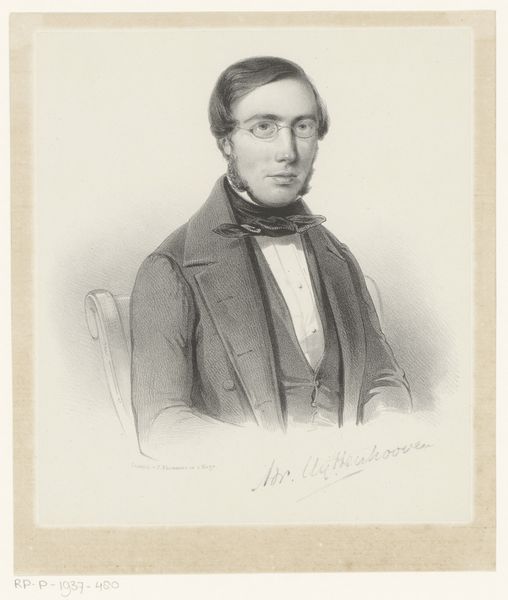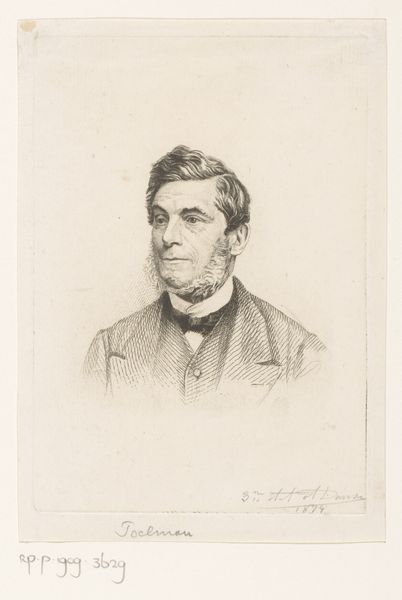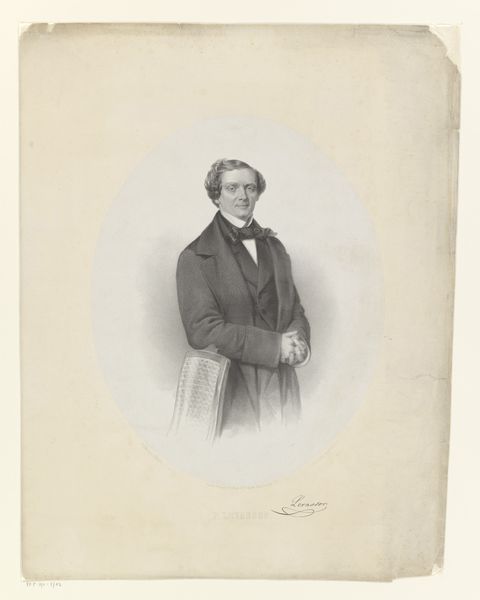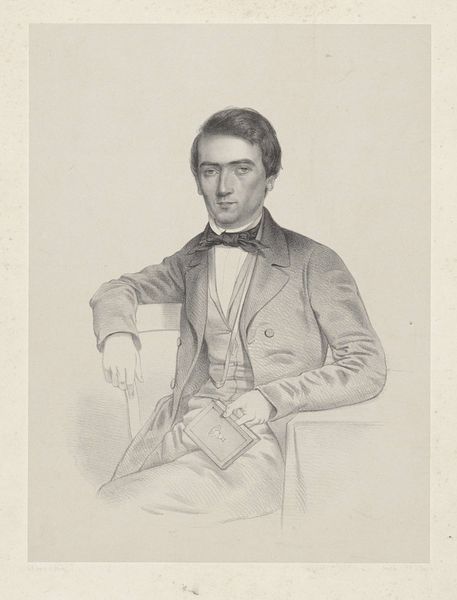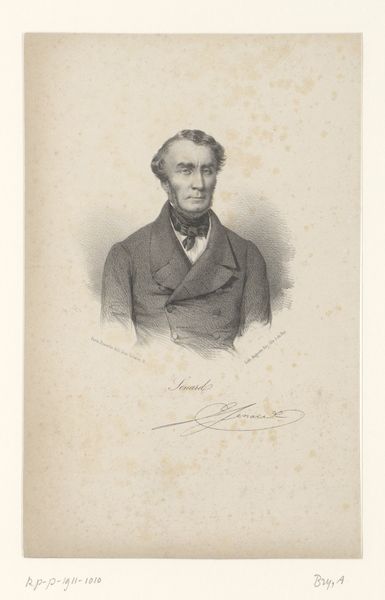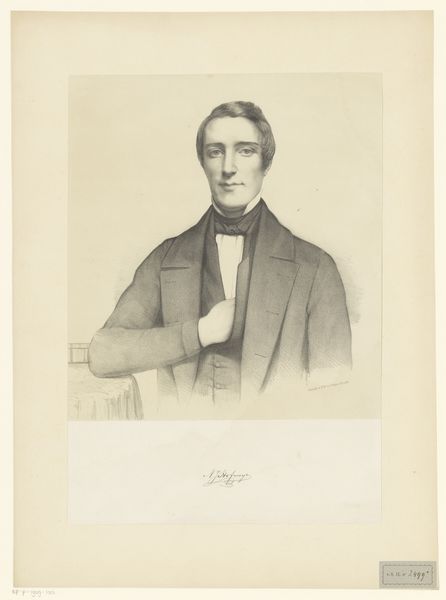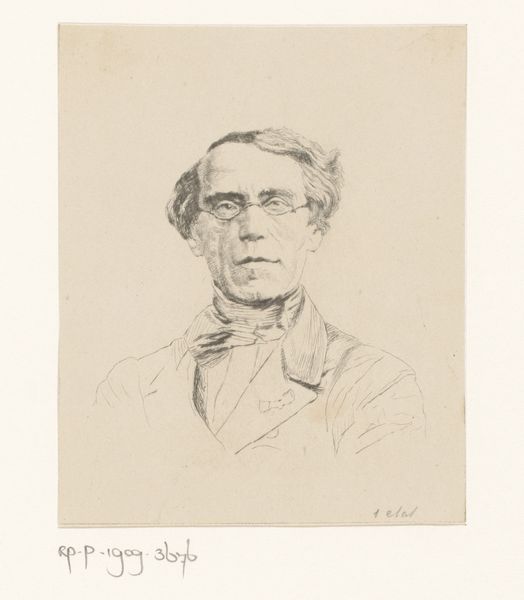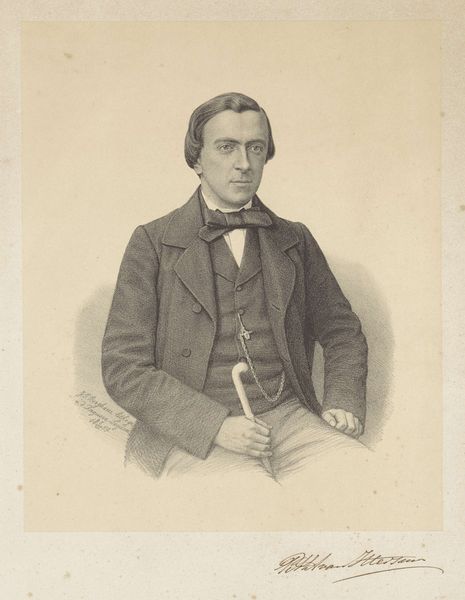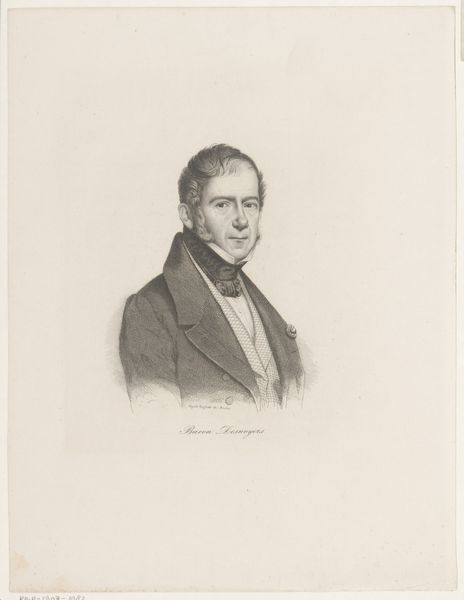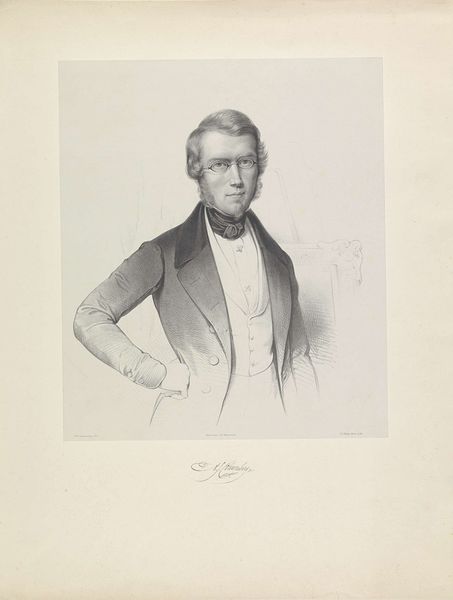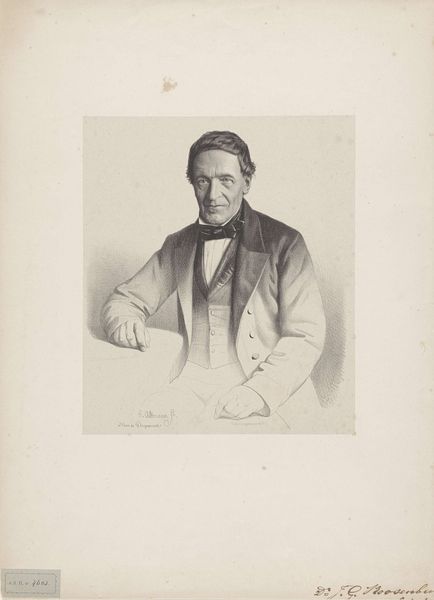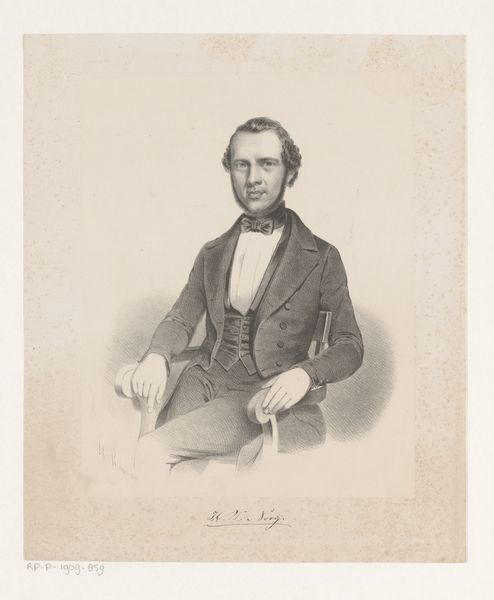
print, engraving
#
portrait
# print
#
old engraving style
#
academic-art
#
engraving
#
realism
Dimensions: height 126 mm, width 102 mm
Copyright: Rijks Museum: Open Domain
Auguste Danse made this portrait of an unknown man using etching in the 19th century. In this period, portraiture served as a powerful tool for constructing and reinforcing social status. Notice the man's attire, the cut of his jacket, and the bow tie, signaling his belonging to a particular social class, most likely the bourgeoisie. The gaze is direct and confident, reflecting the values of the rising middle class in Europe. The format of the etching itself, as a reproducible image, marks a shift towards a democratization of portraiture, making it accessible to a wider audience beyond the elite. What does it mean to portray someone, whose name is lost to us? Whose values do they represent? The answers require that we delve into the social and institutional contexts of 19th-century Europe, exploring the rise of the middle class, and the changing landscape of artistic production and consumption. Historians look at studio records, exhibition catalogues, and social histories to understand the deeper meanings embedded in works like this.
Comments
No comments
Be the first to comment and join the conversation on the ultimate creative platform.
